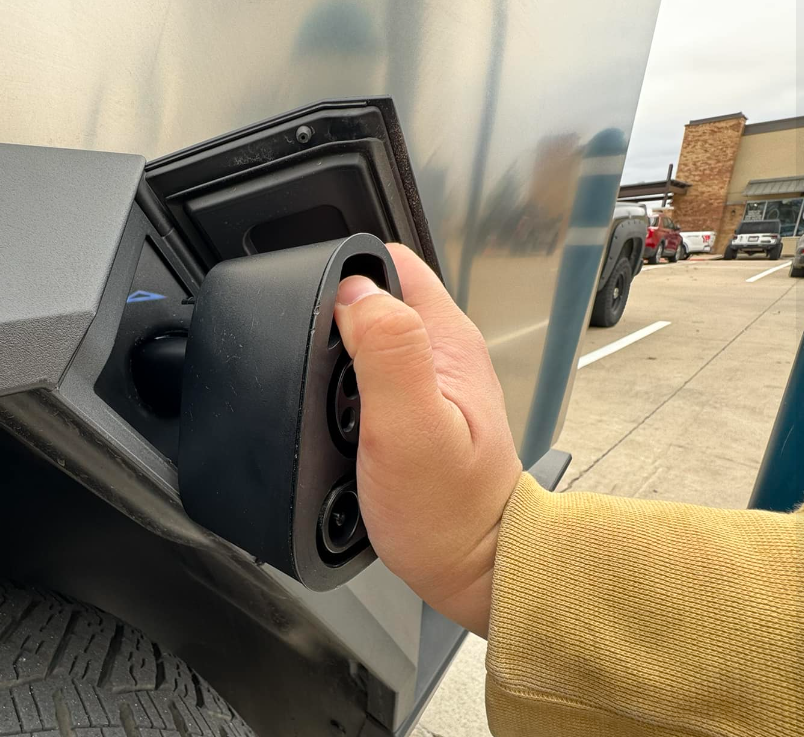As the Tesla Cybertruck makes its way to owners, the enthusiast community is once again playing a key role in uncovering significant details about the electric pickup. In a notable discovery, it appears that Tesla has moved away from supporting the CCS Combo 1 charging connector in the Cybertruck, a revelation made by Kyle Conner from Out of Spec Reviews.
According to Conner, the Cybertruck seems to be physically designed to reject a CCS1 to NACS (Tesla’s proprietary charging port) adapter, preventing the use of non-Tesla charging sources such as the CCS1 high-voltage DC stall from EVGo. The adapter, which is bulky, is obstructed by the plastic wheel arch in the charging port, making it impossible to be fully seated. While removing the plastic wheel arch allows the adapter to fit, it leaves the vehicle incomplete, an undesirable situation given the high price tag of the Foundation Edition, priced at over $100,000.
Conner’s testing revealed that even with the adapter fully seated, the Cybertruck refused to recharge from a native CCS1 high-voltage DC stall from EVGo. He speculates that the vehicle might be more receptive to charging from a low-voltage charger, such as a Level 2 unit designed for home charging. This limitation is significant as the Cybertruck, with its 800-volt architecture, represents Tesla’s most advanced passenger vehicle to date, and this technology may be incorporated into future, more affordable models.
The move away from the CCS1 connector was initially hinted at when Ford and General Motors entered agreements with Tesla to access the Supercharger network, leading to the adoption of Tesla’s NACS port in their future electric models from 2025. While this shift is on the horizon, current electric vehicles (EVs) in the U.S. continue to come with CCS1 connectors. However, the ability to charge a Tesla with a CCS1 Level 1 or Level 2 home charger, using an adapter, appears to be restricted to non-Cybertruck models.
This development underscores the potential implications for future Tesla models and their compatibility with existing charging infrastructure. As the electric vehicle market evolves, the transition away from certain charging standards may influence industry dynamics and shape the charging ecosystem. The findings from the Cybertruck’s charging capabilities highlight the ongoing technological evolution within Tesla and its impact on the broader electric vehicle landscape.

